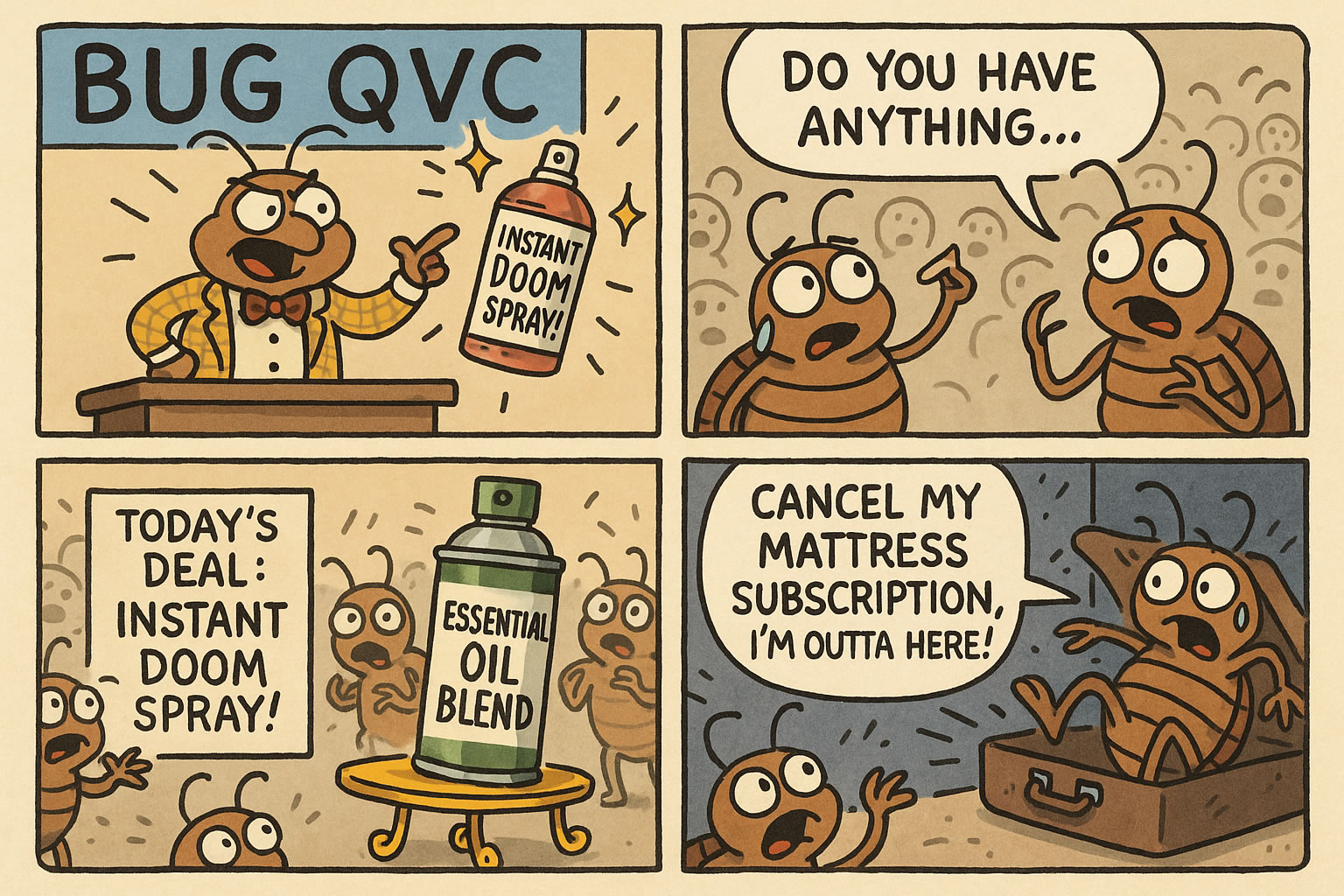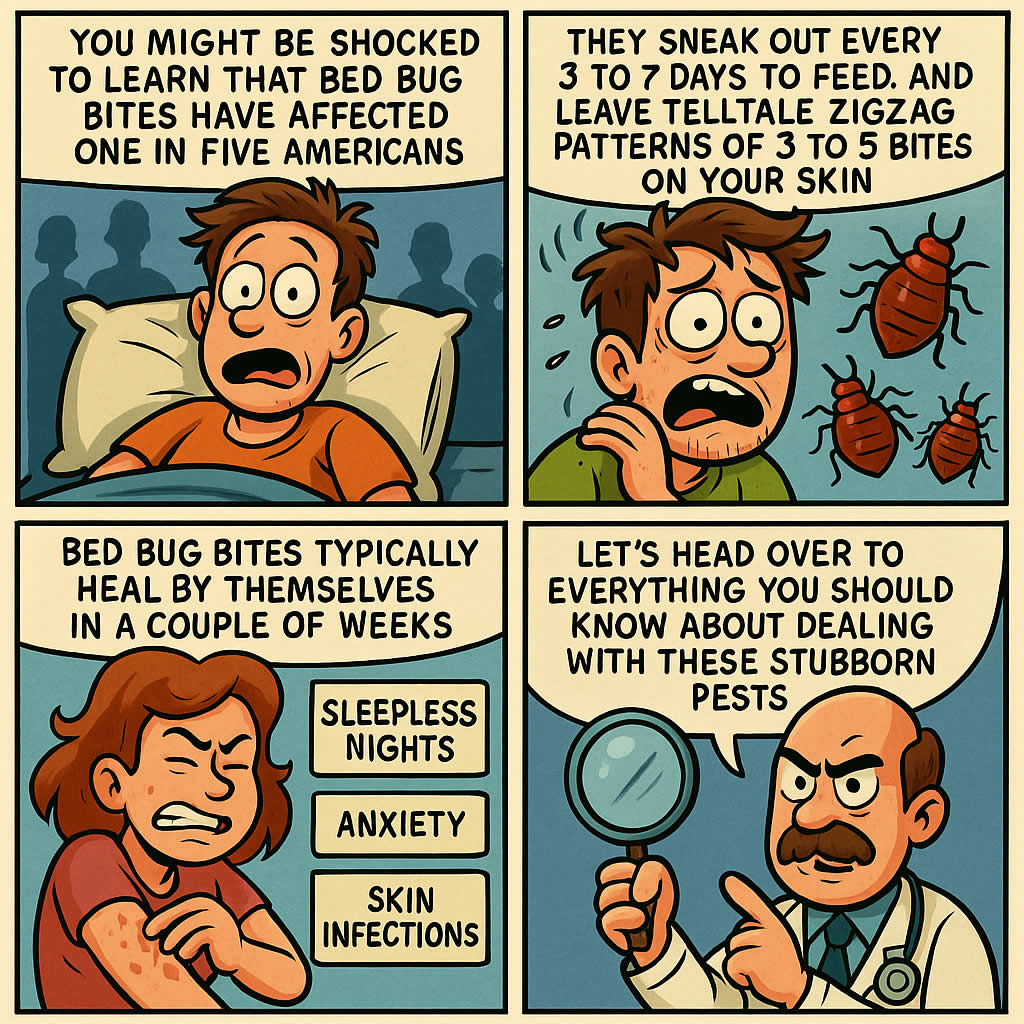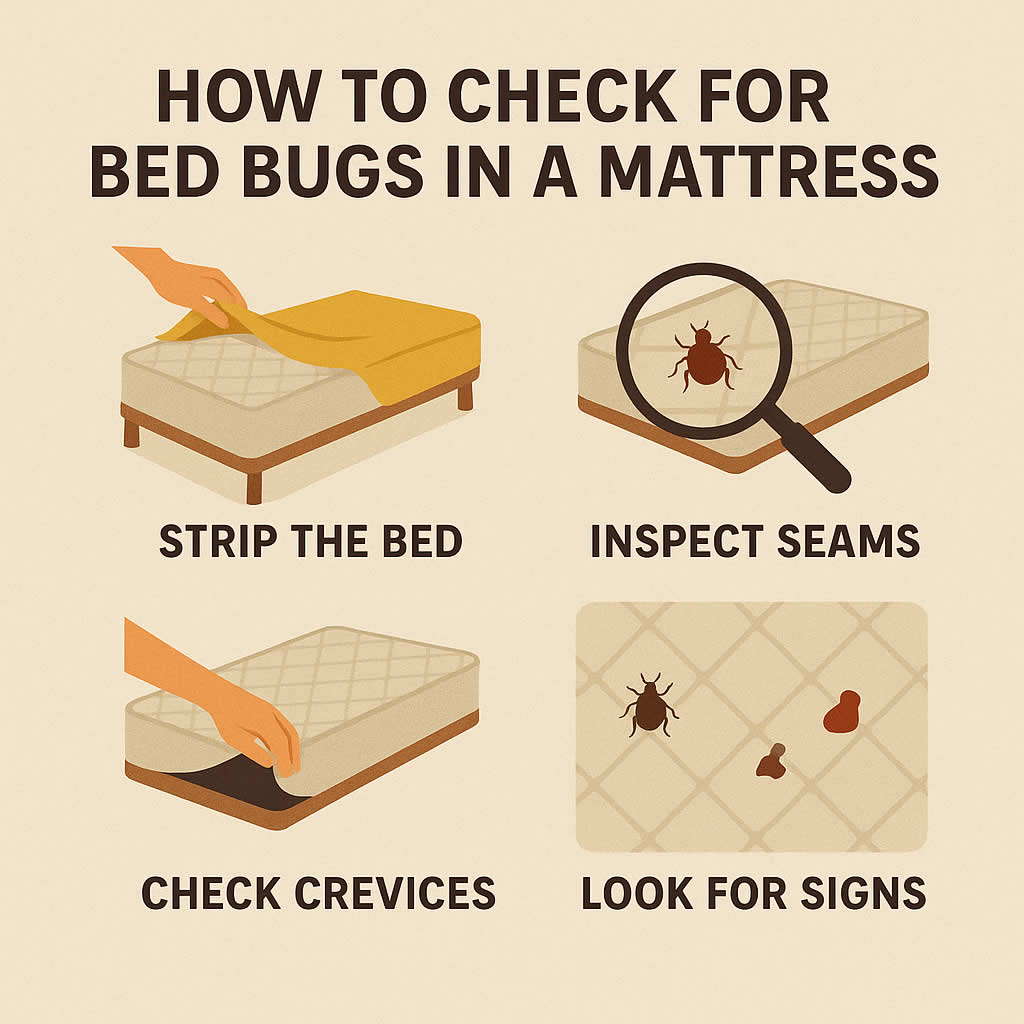Related Queries
ToggleWhat do bed bugs look like? Bed bugs are parasitic insects that feed on the blood of humans and animals. They are about the size of an apple seed, but their flattened bodies can squeeze into small spaces, like mattress seams or cracks in the wall. Checking for bed bugs is a nuisance, but they can also cause health problems, including allergic reactions, skin rashes, and anxiety. Identifying these pests is vital to controlling and preventing infestations, so, let’s find out see what bed bugs look like!
What Do Bed Bugs Look Like?
Bed bugs, those pesky pests that invade our peaceful slumber, are characterised by their small and flat physique. With an oval-shaped body measuring around 4-5mm, they are roughly the same size as an apple seed. Sporting a reddish-brown hue, these nocturnal creatures turn a deep shade of red after indulging in a blood feast. With six legs and a pair of antennae gracefully positioned at the front of their head, bed bugs are agile in their quest for sustenance.
It’s worth noting that these bothersome bugs lack wings, rendering them incapable of taking flight. So, rest assured, these wingless intruders won’t be buzzing around in the air. Instead, they rely on their remarkable crawling abilities to navigate various surfaces, effortlessly maneuvering through cracks and crevices. Their bodies are equipped with tiny hairs that allow them to cling onto fabric and hitch a ride on unsuspecting victims. Once they find a cosy spot, they secrete a sticky substance that helps them stay put and avoid detection.
These stealthy creatures are not only resilient but also possess an uncanny ability to withstand extreme conditions. Bed bugs can survive for months without a blood meal, patiently waiting for the perfect opportunity to strike. Their incredible adaptability makes them difficult to eliminate, and their presence can cause significant distress and discomfort.
Preventing a bed bug infestation requires vigilance and thoroughness. Regularly inspecting mattresses, furniture, and luggage is crucial, as these are common hiding spots for these unwelcome intruders. Taking immediate action at the first sign of an infestation is essential to prevent their numbers from multiplying and spreading throughout your home.
Immature bed bugs, also known as nymphs, are smaller and lighter in colour than adults. They go through five nymphal stages before reaching adulthood. Each nymphal stage requires a blood meal to move to the next stage.
Bed bug eggs are pearly white, oval-shaped, and about the size of a pinhead. They are typically laid in clusters in cracks and crevices near where people sleep. Bed bug eggs can survive for several months without food or water.
Here is a table summarising the physical characteristics of bed bugs at different stages of their life cycle:
| Stage | Colour | Size | Characteristics |
| Adult | Reddish-brown | About the size of an apple seed | Oval-shaped, flat body, six legs, two antennae |
| Nymph | Translucent whitish-yellow | Smaller than adults | Oval-shaped, flat body, six legs, two antennae |
| Egg | Pearly white | About the size of a pinhead | Oval-shaped |
Where Do Bed Bugs Hide?
Bed bugs, those pesky nocturnal creatures, are most active when the sun goes down. With their sly and elusive nature, they derive pleasure from expertly concealing themselves within the tiniest cracks and crevices, ensuring their survival.
While mattress seams, bed frames, and bedding are their preferred hideouts, they are not limited to just these areas. These cunning critters can also seek refuge in various unexpected places, such as furniture, electrical outlets, behind picture frames, and even within the seams of luggage, making them a truly formidable foe to eradicate. Their adaptability and resilience further accentuate the challenges faced in combating these persistent pests.
How to Spot Bed Bug Infestation?
One of the most common signs of getting a bed bug infestation is the presence of itchy red bumps on your skin. These bed bug bites can vary in appearance and may be accompanied by swelling or a rash in some cases. However, it’s important to note that not everyone will experience these symptoms, as reactions to bed bug bites can differ from person to person.
In addition to the itchy red bumps, there are other signs to watch out for that may indicate a bed bug infestation. These include the presence of blood spots on your sheets, which can occur when you accidentally crush a bed bug while sleeping. You may also notice empty eggshells or shed exoskeletons, as bed bugs go through multiple molting stages as they grow and develop.
Another potential sign of a bed bug infestation is the presence of brownish excrement spots on your bedding or furniture. These spots are often left behind by bed bugs as they feed on blood and digest their meals. They can appear as small, dark stains that are similar in size to a pinhead.
Bed bugs can emit a distinct odor that is often described as sweet and musty. If you detect an unusual smell in your bedroom, especially one that seems to linger or intensify over time, it could be a sign of finding a bed bug infestation. It’s important to take action promptly if you suspect bed bugs, as they can reproduce rapidly and infest other areas of your home if left untreated.
What Should You Do If You Have Bed Bugs?
Getting rid of bed bugs can be a challenging task, but it’s definitely not impossible. The first step you should take is to quarantine the affected area in order to prevent any further infestation. Make sure to remove any clutter and thoroughly vacuum the entire area, paying close attention to the seams of your mattress and furniture where these pesky bugs tend to hide. Additionally, it’s crucial to wash all your bedding in hot water and ensure they are dried on high heat.
This is because bed bugs are highly sensitive to temperature, and subjecting them to high heat can effectively eliminate them. If, despite your best efforts, these measures do not give the desired results, it would be advisable to seek professional help from experts in dealing with bed bug infestations.
Conclusion
In conclusion, bed bugs are small, reddish-brown insects with a flat, segmented body. They have six legs, two antennae, and vestigial wings. Bed bugs are attracted to heat and carbon dioxide and feed on human blood. These nocturnal pests are notorious for their ability to hide in tiny cracks and crevices, making them difficult to detect. Identifying bed bugs is crucial to controlling and preventing infestations as early intervention is key.
If you suspect a bed bug problem, it is highly recommended to contact a professional pest control expert without delay. Taking swift action is essential to ensure the prompt and effective eradication of these unwanted guests from your home.
Pest Control County Durham – Pest Control West Sussex – Pest Control Leicestershire













